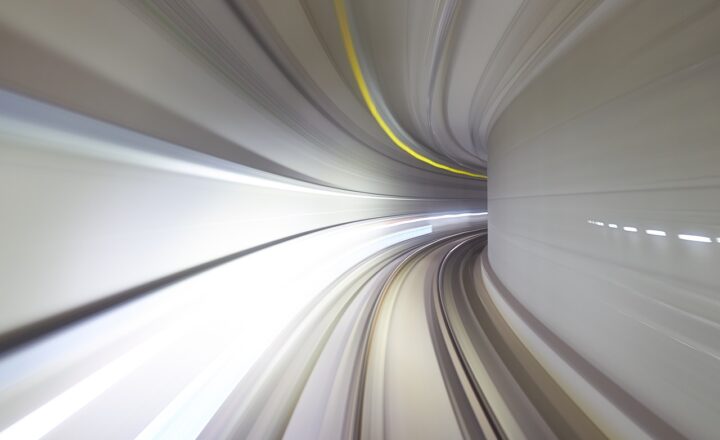Inside the World’s Fastest Trains: How They Achieve Blazing Speeds
November 11, 2024

When it comes to modern transportation, few marvels rival the speed and efficiency of high-speed trains. With their streamlined designs and advanced engineering, these transportation giants have revolutionized how we travel around the globe. In this article, we will dive deep into the world of the fastest trains, exploring the technology behind their remarkable speeds and what sets them apart from conventional trains.
1. The Evolution of High-Speed Rail
The concept of high-speed rail is not new. It started gaining traction in the 1960s when Japan launched the Shinkansen, often referred to as the “bullet train.” The Shinkansen was groundbreaking, cutting travel time between major cities dramatically.
From these humble beginnings, countries like France, Germany, and China embraced the idea, investing significantly in high-speed rail networks. Today, high-speed trains boast incredible speeds, efficient designs, and a crucial role in reducing congestion in urban areas.
The technology and infrastructure supporting high-speed rail have evolved significantly, adapting to meet the increasing demands for faster, safer, and more efficient travel.
2. What Defines a High-Speed Train?
High-speed trains are typically defined as trains that travel at speeds of over 250 km/h (155 mph) on newly constructed tracks and 200 km/h (124 mph) on existing lines. However, some countries have set even higher benchmarks:
- Japan’s Shinkansen: Generally operates at speeds up to 320 km/h (199 mph) and holds a record of 602 km/h (374 mph) for a test run.
- France’s TGV: Currently operating at speeds of around 300 km/h (186 mph), with a record of 574.8 km/h (357.2 mph) during a test run.
- China’s CRH380A: Operates at 380 km/h (236 mph), with the ability to reach speeds of 486.1 km/h (302.4 mph) during tests, making it one of the fastest commercial trains in the world.
Each of these trains utilizes cutting-edge technology and optimized design to achieve their astonishing speeds, setting new standards for global rail travel.
3. Key Technologies Behind High-Speed Trains
The innovation behind high-speed trains revolves around several advanced technologies and engineering principles that enhance speed and safety:
a. Aerodynamics
Aerodynamics plays a crucial role in the efficiency and speed of high-speed trains. Engineers design these trains with a streamlined shape to minimize air resistance (drag). This aerodynamic efficiency not only enables trains to travel faster but also enhances energy efficiency, allowing them to use less power at high speeds.
b. Advanced Track Design
High-speed rail systems require specially designed tracks to accommodate the intense speeds. These tracks feature gentle curves and banked turns to ensure stability and safety. Additionally, the tracks are elevated in many areas to further reduce friction and wear, allowing trains to glide smoothly.
c. Magnetic Levitation (Maglev) Systems
One of the most groundbreaking advancements is magnetic levitation (Maglev) technology. In Maglev systems, trains hover above the tracks, eliminating friction. This technology can achieve incredible speeds, with the Shanghai Maglev train reaching 431 km/h (268 mph) during regular operations. The absence of wheel-to-track contact allows for smoother and quieter rides, significantly reducing maintenance costs.
d. Regenerative Braking Systems
Safety is paramount in high-speed rail systems. Regenerative braking technology utilizes the train’s inertia to convert kinetic energy back into electrical energy. This energy can be used to power the train or supplied back to the grid, enhancing efficiency and reducing the energy footprint of operations.
4. The Fastest Trains in the World
As of now, the title of the fastest train in the world goes to the Japanese SHINKANSEN, which can reach operational speeds of 320 km/h (199 mph). However, several noteworthy competitors challenge its record:
- Shanghai Maglev Train: Holds the title for the fastest commercial train, reaching a speed of 431 km/h (268 mph).
- French TGV: Has set multiple world records, including a remarkable speed of 574.8 km/h (357.2 mph) during a test run on a special track in 2007.
- CRH380A Train (China): Operates at 380 km/h (236 mph), with peak experimental speeds confirmed at 486.1 km/h (302.4 mph).
These trains exemplify the pinnacle of engineering and innovation, shaping the future of rail travel and inspiring further advancements.
5. Challenges and Opportunities in High-Speed Rail Development
While the promise of high-speed rail is enticing, it comes with its challenges—financial, environmental, and technological.
a. High Construction Costs
Building high-speed rail infrastructure is a massive investment. Countries must allocate vast resources for land acquisition, construction, and technology. The high costs can often deter investment despite the significant long-term benefits these systems can provide.
b. Environmental Concerns
High-speed rail projects are under scrutiny for their environmental impact, from land disruption during construction to energy consumption. However, when compared to cars and airplanes, trains emit significantly less CO2 per passenger-kilometer, showcasing their potential as greener options for transportation.
c. Integration with Existing Transport Systems
To maximize the efficiency of high-speed rail, it needs to be effectively integrated with local transit systems. This can be a logistical challenge, requiring coordinated scheduling and connections to ensure smooth transitions for passengers.
With proper vision, investment, and technology, high-speed rail can become a cornerstone of sustainable urban mobility while reshaping how we travel across countries and continents.
Conclusion: The Future of High-Speed Trains
The rapid development of high-speed train technology reflects a changing attitude towards efficient and environmentally friendly transportation. These trains are not just about speed, but also about connecting people and cities in ways that were previously unimaginable.
As countries continue to invest in their rail infrastructure, the future of trains appears bright. With innovations like Maglev technology and improved sustainability methods, we can anticipate an even faster, more efficient, and greener future in rail travel.
With the world continuing to embrace the need for efficient transport solutions, high-speed trains will be indispensable in achieving the goal of a fast, convenient, and green transportation system for the 21st century.





